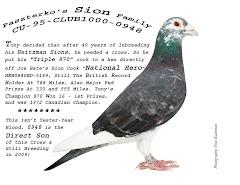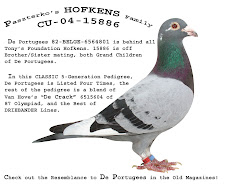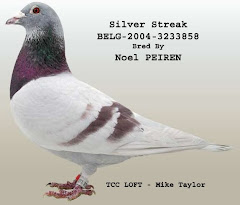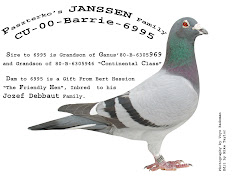The two box system is a useful system for racing odd cocks, but even so, one cock out of the two is kept idle. This may be useful if you are resting a cock that particular week, but is not always desirable. It is possible to race both cocks on this system by having the nest box in three sections instead of two, so that each contends for the centre section. These three-section nest boxes will have to be specially constructed, so I will start by describing them first.
As can be seen from the diagram, there are two doors opening outwards for the two end sections; section B, the centre section, can only open into A or C, and is separated from them by double doors; the inner door consists of wire or laths, which can be seen through and the outer door is solid. Both these doors are pivoted on to the rear wall of the nest box and swing outwards from Section B, so that when open they lie flat at the back of Sections A and C. Sections A and C have both normal dowelling, lath or wire external doors.
The First Race
The procedure adopted for training and racing is somewhat similar to that used in the two-box system. One cock you intend to race is placed in Section A early in the year, and is allowed to become accustomed to his section. The training up to the first race is done by the cock from this nest box flying normally, and during the whole of the time both doors separating A and B are kept closed. In other words, the cock in A cannot see either of the other nest boxes. At the same time, the second racing cock is placed in Section C, and similarly both doors separating C from B are kept closed.
As the time for the first race approaches, on the day or perhaps two days before basking, the solid door separating A from B is opened while the bird is at exercise. The cock, when he returns, can now see into Section B, but cannot get into it. He is then allowed to spend about two hours trying to get into this centre section. Finally he is allowed to occupy it and is fed with tit-bits. He cannot, of course, see the cock in Section C, because both doors separating B from C are still closed. He will then be allowed to take his afternoon exercise, and as soon as be is out, both doors separating A from B are shut. Then the cock that is in C, and which just prior to this, has had his afternoon flight, is allowed to see into Section B, by removing the solid door separating C from B. When this second cock has been tantalized thus for a while (it must of necessity not be very long as this must be accomplished while the cock from A is exercising), he is allowed to occupy the centre Section B and is also fed with tit-bits. The cock in Section C is then returned to his own section and the doors separating B and C are shut. By this time, the cock in A will have returned and will be allowed to occupy A and B.
As the moment of basketing approaches, all is in readiness for the key moment, and just before basketing, the solid door between B and C, which prevents the two cocks seeing each other, is opened and the cocks realise for the first time that they are contenders for the centre section. They are then basketed, taking the obvious precaution of not putting them in the same basket, although this may not of necessity have the disastrous results which one would think. They will then both fly home to gain possession of this centre.
On arrival, the first bird is allowed to occupy the centre section for a short time, and, if possible, he is removed and fed in his own section before the second bird arrives. When he arrives, he too is allowed to occupy the centre section, and then fed in his own part of the box. They are then both shut in their own sections for the night.
After the First Race
On the following day the regular racing procedure begins. On the return from the morning flight, A is allowed to occupy both Sections A and B, and C remains in his own section, unable to see into Section B; and on the evening flight, the cock in Section C also occupies the centre Section B, and A is unable to see into the centre section. This alternate occupation of the centre section is continued throughout the week until the day of basketing approaches, when the previous procedure is followed just before basketing, finally opening both the solid doors so that the two cocks can see each other. It may be possible (as is commonly done by some of the Belgian fanciers who use this method) to arrange it so that on this day of basketing neither of the two cocks occupy the centre section, but see each other right across it, but this is a matter of personal choice.
The system may seem complicated at first, but I have tried to make it as straightforward as possible. All that is really necessary is to realise that, as far as possible, both cocks are treated the same, and both, until the last minute, are allowed to believe that they are the masters of the centre section.
The Advantages
The advantages, I think, of the system, are to a large extent obvious. Firstly, of course, it is one way of flying odd cocks. Secondly, it is a method of giving the cocks an added incentive to rapid flying without the complication of separating the hens in a separate loft, as is frequently done with the normal Widowhood system, although, of course, in this case, too, it is an advantage if the cocks are kept fairly quiet. Thirdly, and perhaps most important of all, it is a system that can be practised in a small loft. Indeed, the loft only needs to contain two cocks, and apart from the construction of the special nest box, requires no further alterations to the loft.
Widowhood Old and New
Edited by Colin Osman















